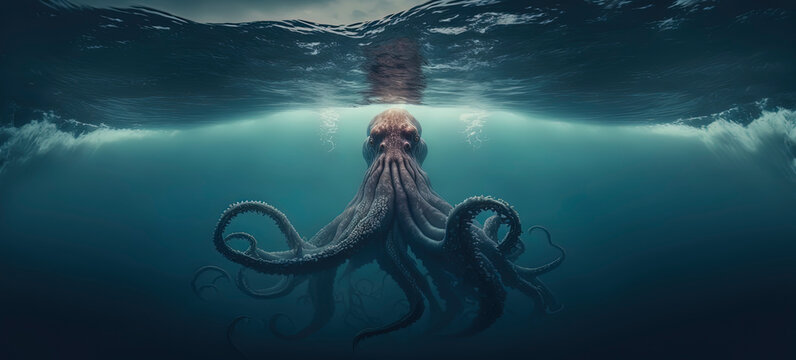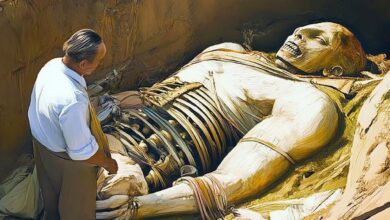When Krakens Were Real…

In history, no sea creature has been as legendary and feared as the Kraken — a giant monster that terrified sailors at sea. The Kraken was described as a creature of enormous size, capable of destroying ships with ease. At one point, the Kraken was believed to be the main cause of accidents at sea. One notable example was in 1782, when researcher Dennis, a malacologist, theorized that the Kraken destroyed 10 British warships based on sighting reports and artwork from the time.
Although the Kraken is now believed to be untrue, it may have been based on real sea creatures such as the giant squid or the giant octopus. These sea creatures are the largest invertebrates on Earth, with the giant squid being the longest and the giant Pacific octopus being the heaviest. They easily confuse people with their shape and size, and may have inspired the image of the Kraken in the imagination of sailors.
Fossils show that in prehistoric times, there were spilaopods (octopuses, squids) that were much larger than today and played an important role in the ecosystem. One of the oldest species was **Endoceras**, a nautiloid species, with a straight conical shell and lived in most seas during the Cambrian period (500 million years ago). This was the period when spilaopods began to flourish, with **Endoceras** becoming the largest animal of that period.
Species such as **Camareros** and **Endoceras** dominated the ocean thanks to their powerful tentacles and skillful hunting ability, becoming apex hunters. Although there are no complete tentacle fossils, scientists believe that these species could have grown up to 30 feet (9.14 m) long and weighed up to 1 ton — three times as much as today’s giant squid.
The prosperity of **Endoceras** and other ancient spilaopods continued until the **Ordovician extinction**, one of Earth’s five major extinction events, about 455 million years ago. This extinction was caused by glaciation, leading to a sharp drop in sea levels and climate change, which wiped out many species, including giant nautiloids.

After this event, spilaopods went through a long period of size reduction, lasting hundreds of millions of years, until larger species began to appear in the **Triassic** period. During this period, ammonites (a family of cephalopods) became abundant and diverse, with some having shells up to 1.7 m (5.6 ft) in diameter, demonstrating the development of marine life during this era. Species such as the **Lioscerat** from the Jurassic period were even heavier than earlier spilaopods, reaching 1.3 tons.
Although ammonites and cephalopods of the Triassic did not reach the size of the ancient Krakens, they were still powerful marine creatures with natural weapons such as sharp beaks and powerful tentacles. Studies have also shown that by the end of the Cretaceous, many spilaopods had evolved to more gigantic sizes and shapes, with the **Tuso Toois** (a family of shellless cephalopods) becoming the most feared “Kraken” of the period.
During the late Cretaceous period, shellless cephalopods like **Tuso Toois** became giant marine creatures, competing with other species like sharks and marine dinosaurs for dominance of the oceans. These species are thought to have lived in deep, dark waters where survival and hunting were a major challenge.








